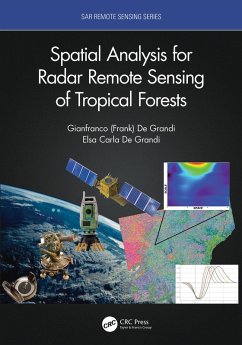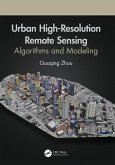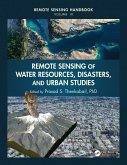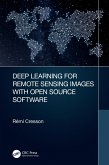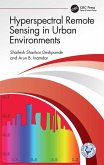Gianfranco D. de Grandi, Elsa Carla de Grandi
Spatial Analysis for Radar Remote Sensing of Tropical Forests (eBook, ePUB)
52,95 €
52,95 €
inkl. MwSt.
Sofort per Download lieferbar

26 °P sammeln
52,95 €
Als Download kaufen

52,95 €
inkl. MwSt.
Sofort per Download lieferbar

26 °P sammeln
Jetzt verschenken
Alle Infos zum eBook verschenken
52,95 €
inkl. MwSt.
Sofort per Download lieferbar
Alle Infos zum eBook verschenken

26 °P sammeln
Gianfranco D. de Grandi, Elsa Carla de Grandi
Spatial Analysis for Radar Remote Sensing of Tropical Forests (eBook, ePUB)
- Format: ePub
- Merkliste
- Auf die Merkliste
- Bewerten Bewerten
- Teilen
- Produkt teilen
- Produkterinnerung
- Produkterinnerung

Bitte loggen Sie sich zunächst in Ihr Kundenkonto ein oder registrieren Sie sich bei
bücher.de, um das eBook-Abo tolino select nutzen zu können.
Hier können Sie sich einloggen
Hier können Sie sich einloggen
Sie sind bereits eingeloggt. Klicken Sie auf 2. tolino select Abo, um fortzufahren.

Bitte loggen Sie sich zunächst in Ihr Kundenkonto ein oder registrieren Sie sich bei bücher.de, um das eBook-Abo tolino select nutzen zu können.
This book is based on authors' extensive involvement in large-scale radar mapping projects, targeting the health of an important earth ecosystem, tropical forests. It highlights past achievements, explains the underlying physics that allow the radar practitioners to understand what radars image, and paves the way for future developments.
- Geräte: eReader
- ohne Kopierschutz
- eBook Hilfe
- Größe: 147.12MB
Andere Kunden interessierten sich auch für
![Spatial Analysis for Radar Remote Sensing of Tropical Forests (eBook, PDF) Spatial Analysis for Radar Remote Sensing of Tropical Forests (eBook, PDF)]() Gianfranco D. de GrandiSpatial Analysis for Radar Remote Sensing of Tropical Forests (eBook, PDF)52,95 €
Gianfranco D. de GrandiSpatial Analysis for Radar Remote Sensing of Tropical Forests (eBook, PDF)52,95 €![Remote Sensing Applications in Environmental and Earth System Sciences (eBook, ePUB) Remote Sensing Applications in Environmental and Earth System Sciences (eBook, ePUB)]() Nicolas R. DaleziosRemote Sensing Applications in Environmental and Earth System Sciences (eBook, ePUB)46,95 €
Nicolas R. DaleziosRemote Sensing Applications in Environmental and Earth System Sciences (eBook, ePUB)46,95 €![Re-envisioning Remote Sensing Applications (eBook, ePUB) Re-envisioning Remote Sensing Applications (eBook, ePUB)]() Re-envisioning Remote Sensing Applications (eBook, ePUB)57,95 €
Re-envisioning Remote Sensing Applications (eBook, ePUB)57,95 €![Urban High-Resolution Remote Sensing (eBook, ePUB) Urban High-Resolution Remote Sensing (eBook, ePUB)]() Guoqing ZhouUrban High-Resolution Remote Sensing (eBook, ePUB)63,95 €
Guoqing ZhouUrban High-Resolution Remote Sensing (eBook, ePUB)63,95 €![Remote Sensing of Water Resources, Disasters, and Urban Studies (eBook, ePUB) Remote Sensing of Water Resources, Disasters, and Urban Studies (eBook, ePUB)]() Remote Sensing of Water Resources, Disasters, and Urban Studies (eBook, ePUB)86,95 €
Remote Sensing of Water Resources, Disasters, and Urban Studies (eBook, ePUB)86,95 €![Deep Learning for Remote Sensing Images with Open Source Software (eBook, ePUB) Deep Learning for Remote Sensing Images with Open Source Software (eBook, ePUB)]() Rémi CressonDeep Learning for Remote Sensing Images with Open Source Software (eBook, ePUB)27,95 €
Rémi CressonDeep Learning for Remote Sensing Images with Open Source Software (eBook, ePUB)27,95 €![Hyperspectral Remote Sensing in Urban Environments (eBook, ePUB) Hyperspectral Remote Sensing in Urban Environments (eBook, ePUB)]() Shailesh Shankar DeshpandeHyperspectral Remote Sensing in Urban Environments (eBook, ePUB)51,95 €
Shailesh Shankar DeshpandeHyperspectral Remote Sensing in Urban Environments (eBook, ePUB)51,95 €-
-
-
This book is based on authors' extensive involvement in large-scale radar mapping projects, targeting the health of an important earth ecosystem, tropical forests. It highlights past achievements, explains the underlying physics that allow the radar practitioners to understand what radars image, and paves the way for future developments.
Dieser Download kann aus rechtlichen Gründen nur mit Rechnungsadresse in A, B, BG, CY, CZ, D, DK, EW, E, FIN, F, GR, HR, H, IRL, I, LT, L, LR, M, NL, PL, P, R, S, SLO, SK ausgeliefert werden.
Produktdetails
- Produktdetails
- Verlag: Taylor & Francis
- Seitenzahl: 372
- Erscheinungstermin: 24. März 2021
- Englisch
- ISBN-13: 9781000364798
- Artikelnr.: 68400771
- Verlag: Taylor & Francis
- Seitenzahl: 372
- Erscheinungstermin: 24. März 2021
- Englisch
- ISBN-13: 9781000364798
- Artikelnr.: 68400771
Gianfranco (Frank) De Grandi received a doctorate degree in Physics Engineering with honors from the Politecnico Milano, Italy, in 1973. He later joined the European Commission Joint Research Center, Ispra, Italy, where he has performed research in signal processing for application areas such as gamma ray spectroscopy, data communications, and radar remote sensing. From 1986 to 1989 he headed the signal processing section of the Electronics Division, JRC, where he introduced VLSI design technology and conducted research, in cooperation with Bellcore, on packet video, and in cooperation with ITALTEL Italy on the European digital mobile phone network. In 1989 he joined the JRC Institute for Remote Sensing Applications, where he started his research activity in radar remote sensing for earth observations, and in particular in SAR polarimetry. From 1997 to 2001 he has served as assistant professor with the Faculte' de Feresterie et Geomatique, Universite' Laval, Quebec, PQ, Canada. He retired from active service at the European Commission in 2012. He continued through 2017 his activity in science and education as a visiting scholar at the University of Wales at Aberystwyth, Ceredigion, UK. Dr. De Grandi collaborated with several laboratories in the US, such as Lawrence Livermore National Lab, and Los Alamos National Lab for nuclear safeguards, Caltech Jet Propulsion Laboratory and the US Naval Research Lab for radar remote sensing. At the EC Joint Research Center (JRC) he was team leader of the Central Africa Mosaic Project (CAMP), a joint initiative of the JRC and the European Space Agency (ESA), which for the first time produced a regional scale high resolution radar map of Central Africa. He was principal investigator with the Japan Aerospace Exploration Agency (JAXA) Global Rain Forest Mapping and Global Boreal Forest Mapping projects, of the JAXA EORC Kyoto & Carbon Initiative for ALOS PALSAR. He was an international collaborator in a NASA Carbon Cycle Science project, led by U. Washington, WA USA. In 2002 Dr. De Grandi was elected IEEE Fellow for his seminal work in continental scale vegetation mapping using high resolution SAR mosaics, and innovative contributions in the area of information extraction from SAR data. He is a member of the IEEE Geoscience and Remote Sensing society, and the IEEE Signal Processing Society.
Elsa Carla De Grandi received a B.Sc. degree in Physical Geography in 2011 and a M.Sc. degree in 2012 (with distinction) in Remote Sensing and Geography from Aberystwyth University, Aberystwyth, UK. In 2017 she was awarded a PhD in Remote Sensing (Atmospheric & Environmental Science) from the University of Edinburgh. Her PhD focused on developing and testing novel SAR and InSAR methods for mapping deforestation and forest degradation in tropical forests. Since 2019 Elsa has been working as an Earth Observation Engineer at GMV NSL in UK. She is also acting as project manager for several projects and contributing to proposal writing particularly on the use of SAR for environmental monitoring. She was a reviewer for IEEE Transactions on Geoscience and Remote Sensing, has published peer-reviewed papers in international journals, and delivered talks on radar remote sensing of tropical forest at several conferences.
Elsa Carla De Grandi received a B.Sc. degree in Physical Geography in 2011 and a M.Sc. degree in 2012 (with distinction) in Remote Sensing and Geography from Aberystwyth University, Aberystwyth, UK. In 2017 she was awarded a PhD in Remote Sensing (Atmospheric & Environmental Science) from the University of Edinburgh. Her PhD focused on developing and testing novel SAR and InSAR methods for mapping deforestation and forest degradation in tropical forests. Since 2019 Elsa has been working as an Earth Observation Engineer at GMV NSL in UK. She is also acting as project manager for several projects and contributing to proposal writing particularly on the use of SAR for environmental monitoring. She was a reviewer for IEEE Transactions on Geoscience and Remote Sensing, has published peer-reviewed papers in international journals, and delivered talks on radar remote sensing of tropical forest at several conferences.
